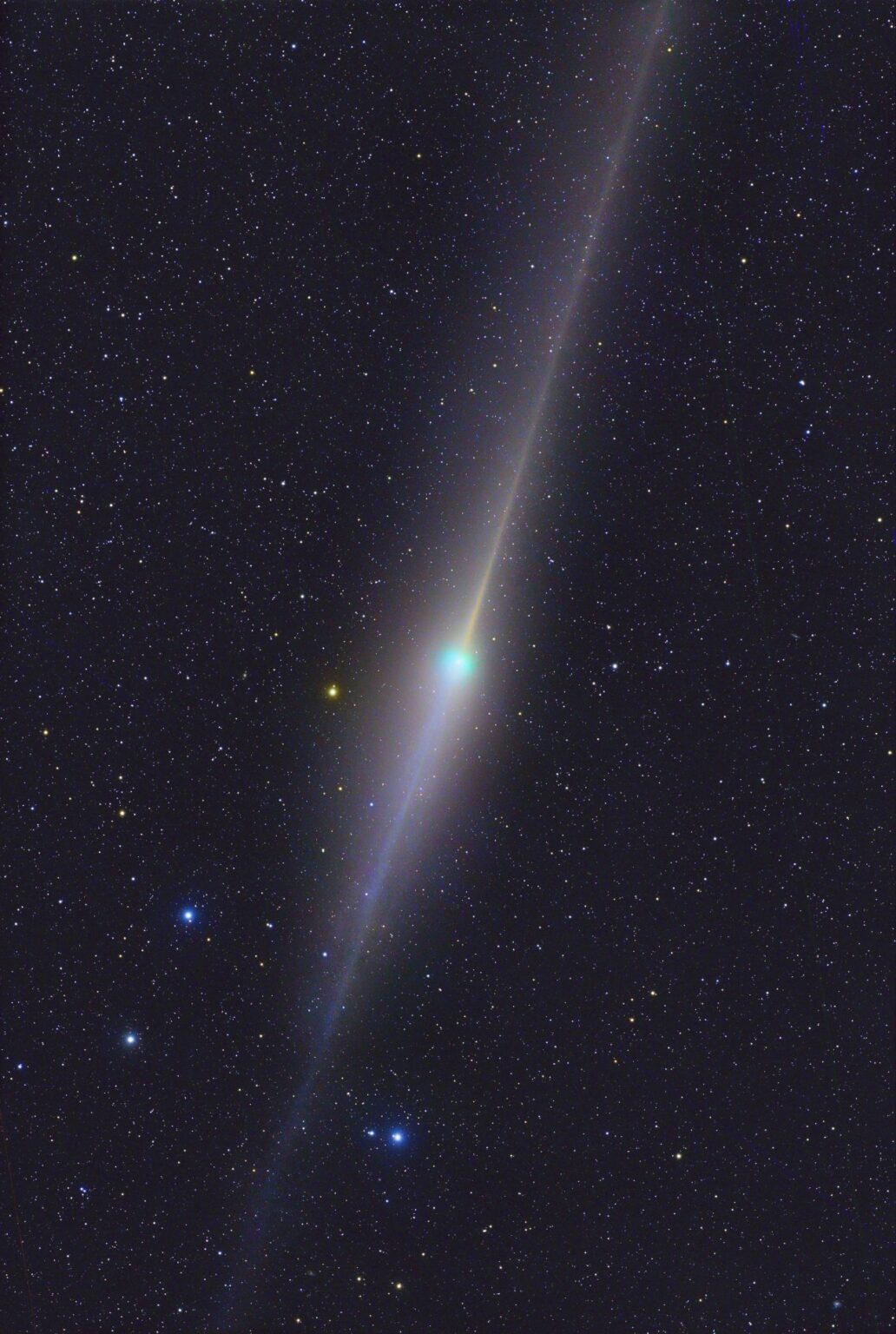Austrian astrophotographer Michael Jäger has published an impressive image of the comet Ponce-Brooks. It shows a curious phenomenon known as an antitail.

When a comet approaches the Sun, its radiation causes volatiles to sublimate on its surface. This leads to the formation of a coma surrounding the comet’s nucleus and an elongated tail. It is usually directed away from the Sun.
However, in addition to the usual tail, a comet can also form an antitail. As a rule, it occurs after passing the perihelion. The antitail consists of large dust particles, which due to their mass and size are weakly affected by the solar wind and remain in the plane of the comet’s orbit, taking the shape of a disk. Because of the rather small concentration of dust particles, it is almost impossible to see this disk under normal conditions. It can only be detected from the edge when it is bright enough to be observed. This is possible during the short period of time when the Earth crosses the plane of the comet’s orbit.
Jäger’s image was taken just as the Earth was crossing the plane of the orbit of comet Ponce-Brooks. Therefore, both of its tails are in the photo. The comet nucleus is in the center of the image, the tail is blue-green, and the antitail is yellow.
Unfortunately, residents of Ukraine can no longer see the antitail of comet Ponce-Bruce with their own eyes. Back in mid-April, it “went” to the southern hemisphere. For this reason, the image of the comet was taken in Namibia.


